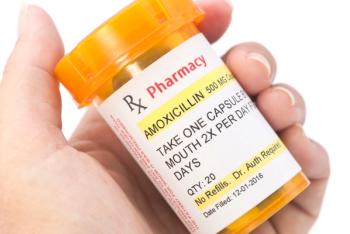
Trump Issues Executive Order Aimed at Reducing Prescription Drug Prices for US Patients
According to the White House, the order builds on actions taken in the president’s first term to reduce price disparities domestically.
United States President Donald Trump has signed an executive order designed to reduce prescription drug prices for Americans, bringing the prices in line with those paid by similar nations. Among other stipulations, the order, issued May 12, 2025, directs the Secretary of Health and Human Services (HHS) to establish a mechanism by which US patients can buy drugs directly from manufacturers who sell at a “most favored nation” price, bypassing middlemen (1).
“In case after case, our citizens pay massively higher prices than other nations pay for the same exact pill, from the same factory, effectively subsidizing socialism aboard [abroad] with skyrocketing prices at home,” Trump said in a Fact Sheet provided by the White House (1). “So, we would spend tremendous amounts of money in order to provide inexpensive drugs to another country. And when I say the price is different, you can see some examples where the price is beyond anything—four times, five times different.”
Government agencies authorized to act
Further directions given in the order include directing the US Trade Representative and Secretary of Commerce to take measures to ensure foreign countries are not unfairly or purposefully undercutting market prices, therefore driving price hikes in the US (1). The Trump administration also plans to communicate price targets to pharmaceutical manufacturers with the goal of securing the best deal for the US, which is both the world’s largest funder and purchaser of prescription drugs.
If drug manufacturers fail to offer most favored nation pricing—within 30 days,
However, the order came on the same day that the Republican-led US House of Representatives rolled out a plan to trim $880 billion from Medicaid (5).
Forecasting pharma impacts
Social media reacted swiftly to news of the executive order.
“This is as disastrous as it gets for biopharma,” John Carroll, founder of Endpoints News,
In 2022, former President Joe Biden signed the Inflation Reduction Act into law, allowing the government to bypass pharmacy benefit managers and negotiate prices directly for several drugs covered by Medicare Part B and Part D that cost the most to patients living in the US; however, the Trump administration said in its May 12 Fact Sheet that Biden’s efforts to “beat Medicare” resulted in drug prices that were, on average, 78% higher than in 11 comparable countries (1,4).
References
1. The White House.
2. Seitz, A. and Kim, S. M.
3. Holland, S.; Erman, M.; and Wingrove, P.
4. Bonavitacola, J. T
5. Mascaro, L.
Newsletter
Get the essential updates shaping the future of pharma manufacturing and compliance—subscribe today to Pharmaceutical Technology and never miss a breakthrough.





